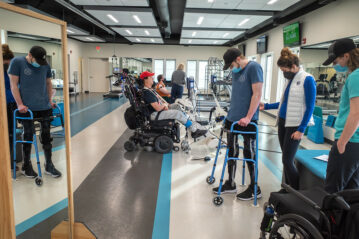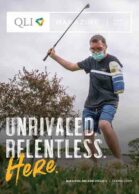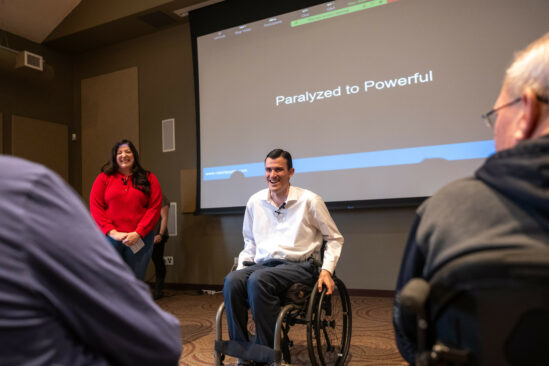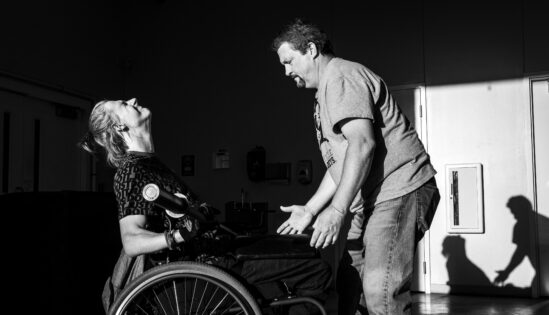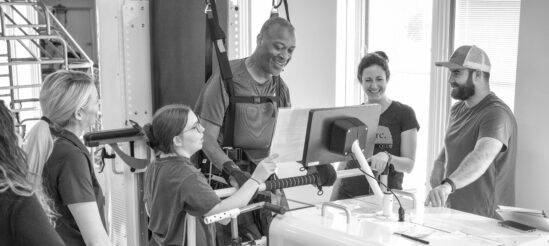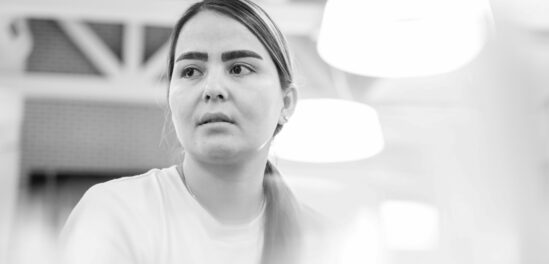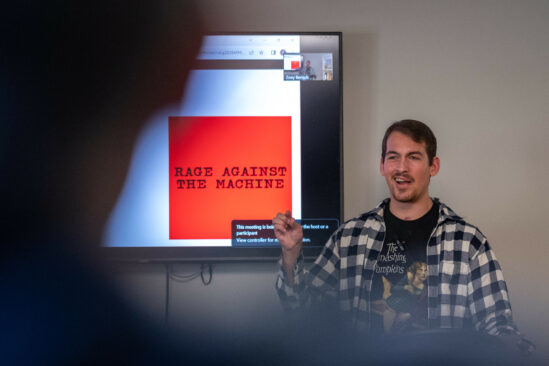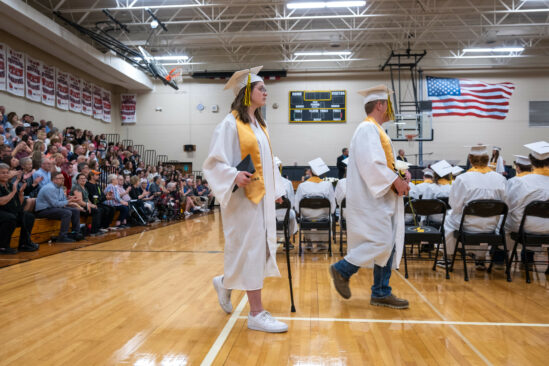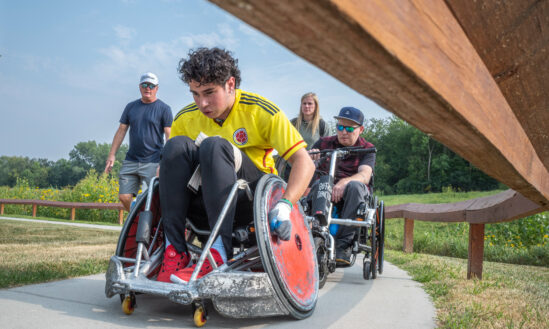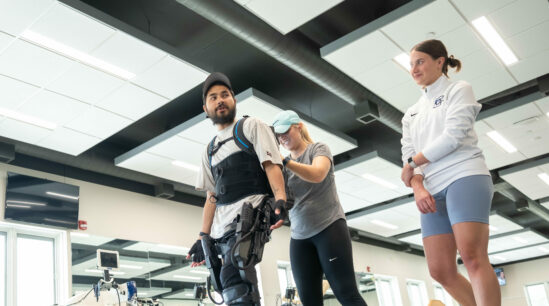Eastern Oregon is a region of old persistence. The Columbia Plateau, which covers most of this land area, formed from lava flows occurring throughout millions of years. Set far from the edges of tectonic plates, scientists are puzzled as to why the land acts the way it does—what the meaning of this prolonged persistence truly is.
Perhaps it is not our place to question the rhymes and reasons of nature, but to match its persistence with our own.
…
Living his whole childhood in Eastern Oregon, Derek Shike thought of it as home, but somewhere he would not reside for long as an adult. He got out at the first opportunity—to college in Arizona. While he enjoyed his time, the warm weather, and the locales, home found a way of calling him back. Some friends were looking to start a food truck with a specialty in breakfast food, and Derek jumped at the opportunity. After returning, Derek eventually pursued other ventures before getting a steady job working in freight operations for a grocery-store chain. Finally, Derek found a rhythm, a flow to his life that could weather any storm.
The persistence of nature, however, is a tricky thing to avoid.
A Force of Nature
Derek’s evening commute to work was routine – until it wasn’t. The accident wasn’t a consequence of an internal injury. It wasn’t due to the decisions or distractions of someone else. Instead, he found himself pitted against the unconcerned will of nature. As heavy rain fell to the road, Derek’s car hydroplaned, and the agency and control he once had with his commute suddenly pulled from him. Good Samaritan bystanders Derek from his car, but he lost feeling in his lower extremities.
Derek transferred to Salem Hospital as the first phase of his recovery and rehabilitation. His assigned occupational therapist had previously worked in Nebraska. It was from this that Derek first heard of QLI. When the time came for the next phase of rehabilitation, Derek once again left Oregon, this time for the Midwest.
In December 2021, Derek was admitted to QLI. He set to work battling back against the persistence of nature that had changed his life. Since that day, Derek has never given an inch in his therapy sessions. Just two months instilled a whirlwind within him.
“Coming into QLI, Derek was like a sponge—ready to soak in the experiences and try anything,” says QLI Occupational Therapist Morgan Chapman. “He has a great mindset of ‘I’m going to figure it out, and I’m going to find a way to make it work.’
Gains Through Repetition
Early on a Friday morning, Chapman has selected a session of speed and accuracy—five coaster-shaped devices are connected to a phone app and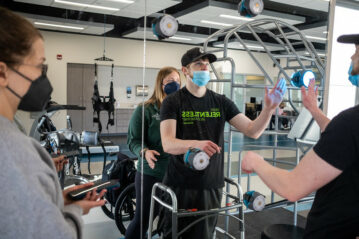 placed upon a mirror in the Gait & Robotics Lab. In either random or selected patterns, one light on one of the discs will flash. The client in therapy must tap the lit disc with the palm of their hand, and another disc in the group of five will light up. The faster the palms move and tap, the faster the lights flash. A walker placed in front of him for balance, his eyes dancing across the scope of the mirror—waiting for the next flash to come.
placed upon a mirror in the Gait & Robotics Lab. In either random or selected patterns, one light on one of the discs will flash. The client in therapy must tap the lit disc with the palm of their hand, and another disc in the group of five will light up. The faster the palms move and tap, the faster the lights flash. A walker placed in front of him for balance, his eyes dancing across the scope of the mirror—waiting for the next flash to come.
He’s fast—the hunger within him evident for all around. Chapman taps a few times on her phone—changing up the pattern with each round. Even with this change, Derek is wholly adaptable. With each tap on the discs, a little more control is regained. After a few rounds of the discs, Derek’s speed and rhythm increase. The tunnel of his recovery lessens slightly in its hold—and the light at the end of it becomes much more evident. The lights on the discs are representative of this greater gain.
Finding Balance
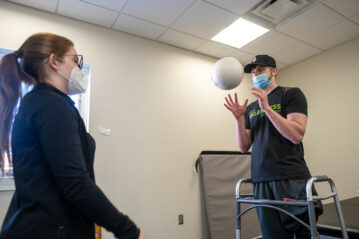 Following this period, Physical Therapy Assistant Emma Smith brings out a volleyball. “We’re going to practice catching a ball and focusing on stabilizing your balance,” says Smith. Before too long Derek establishes a solid rhythm.
Following this period, Physical Therapy Assistant Emma Smith brings out a volleyball. “We’re going to practice catching a ball and focusing on stabilizing your balance,” says Smith. Before too long Derek establishes a solid rhythm.
Derek considers the act of catching a ball. “I’ve played basketball since I was young,” he says, and the catching reflexes show with each pass between him and Smith. “Through high school, even…” Even with a missed catch, as his legs wobble slightly and he begins to pitch forward, he recovers with both hands on the sides of the walker. Maintaining a light attitude throughout, Derek muses on the advantages of this therapy exercise. He is never one to set the brakes on progress.
Driving Towards Independence
Twice a week, Derek bundles up and goes out into the cold to practice transferring into a car from his wheelchair. Derek completes the routine, regardless of the Nebraska February temperatures, chilly wind, or the recent snowfall. Once he discharges, he will not have a choice to forgo transferring into a car when the weather is less than ideal—he must get the practice in the elements now so he will be ready when on his own.
“I don’t want to scratch her car.” Derek is sitting in the driver’s seat hunched forward and to the left. Beneath the open car door, his wheelchair lies half-dismantled. Both support bars, the chair cushion, and one wheel are on the passenger’s seat. Again, therapist Morgan Chapman stands beside the car door, hands at the ready to give Derek some support as he bends over the seat to tend to the wheelchair.
“I want you to take the other wheel off and then pick up the body of the chair. You don’t have to set it in the car; I just want to see you start to pull it in.” Derek sighs—the monotony of the wheelchair transfer is clear and time-consuming, and with a wind-chill of five degrees, brutal to say the least.
Derek cups both hands to his face and blows to warm them. The transfer he worked through was near the end of the process to drive again and reassert control of the road. He completes the transfer and leans back in the seat, closing his eyes for a moment. It is tough and tiring, but the desired result moves closer. Over the past couple of months, he passed all the adapted driving tests and he will soon be on the road once more – a monumental gain for his long-term independence.
The Road Beyond
For simple gait training early on a Friday morning, Smith positions Derek in front of a mirror with two elbow crutches, slowly lifting his right leg out and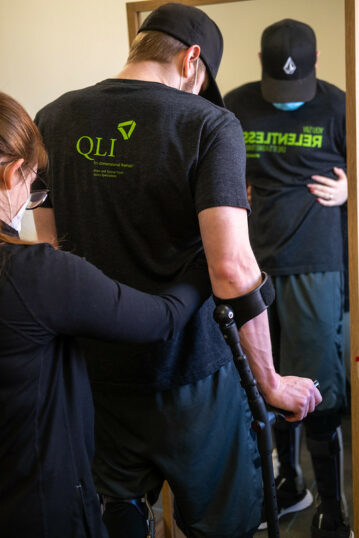 forward, then back, and doing the same with his left leg. His head is down, concentrating on the rhythm he must establish with each stride. After many moments, his head lifts to gaze into the mirror. His gait improvement is evident to everyone around.
forward, then back, and doing the same with his left leg. His head is down, concentrating on the rhythm he must establish with each stride. After many moments, his head lifts to gaze into the mirror. His gait improvement is evident to everyone around.
He is now very close to the end of his stay at QLI, just a week or so away from discharge. Every step made and every push within therapy sessions equates to an increased level of preparedness once he returns home to Oregon. When Derek discusses the future with clinicians, he is sure and confident.
“I’ll go back to work for the grocery-store chain I was at before the accident,” he says. “Though, I probably won’t be working the forklift again,” he adds with a chuckle. “Maybe an office job with them, in HR.” There is an underlying positive impatience with the goals. He is impatient for the long drive home. The positivity stems from how he sees his life resuming upon his return.
The gaze into the mirror is a quick and silent conversation with himself—an in-the-moment affirmation of the progress he is making. Even after the session ends, a reflective affirmation stays with him—a sense of self unmatched. Back in this moment, Derek Shike gathers energy to refocus on his legs, and his head moves back down to guide the legs where they need to move to complete the stride. Now, he is the one who persists.
